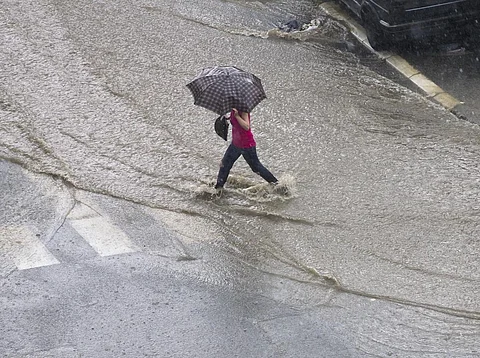

India’s fast-developing urban areas are heading towards catastrophe in the next three decades unless tough policy decisions are taken with regard to urban planning and design, experts told Down To Earth October 31, celebrated as World Cities Day.
They added that be it any aspect, including construction, master plans, byelaws, drainage, water security, air pollution or transit, Indian cities were lacking on all counts. Creeping climate change made the challenge of urban planning in 21st century India only more difficult.
Seven of every 10 people in the world will live in cities by 2050, according to the United Nations. Urbanisation will benefit people but haphazard development will also affect many, most of them extremely poor and marginalised sections.
Rajneesh Sareen, programme director, Sustainable Habitat, Centre for Science and Environment (CSE), New Delhi, talked about how India’s urban planning scene was in the doldrums.
Master Plans of only 1,500-1,600 of 7,000 census towns had been prepared. Legalised Master Plans may just be of 500 towns, he said. The number of urban planners per capita is also short, he added.
“There is no legal sanctity or power accorded to any institution to control or channelise urban development. The system, instead of being proactive, has become reactive. We regularise unauthorised colonies. The urban form thus decides development instead of regulations,” he told DTE.
This was especially unfortunate for India, given the rising spectre of climate change. Heat and rainfall were expected to increase due to global warming.
Sareen noted:
Temperatures above 45 degrees Celsius can cause heat stress. Almost a third of Pune records temperatures above 45 degrees. These temperatures are recorded in areas home to economically weaker sections.
Master Plans, land use controls and byelaws were meant precisely to prevent this. “They are instruments to mitigate climate inequality. And yet we sabotage them, making poorer sections suffer due to climate change which we have caused,” he added.
The perfect example of this was Bengaluru. “That city, with the best natural climatic conditions, has become a victim today. Haphazard development means the climatic advantages of Bangalore are today its disadvantages. It now floods periodically,” Sareen said.
Dhruv Pasricha, deputy programme manager, Urban Water-Waste Management, CSE, noted that drainage was not just stormwater drains and major channels but also green spaces, parks, lakes, small ponds which have all been encroached upon in Indian cities.
“A lot of urban development is about land use change. When you change from natural to built-up, you increase the runoff. You have to make sure you have enough sponges or space to handle the runoff,” he added.
On the other hand, both, stormwater drains as well as major channels, faced problems regarding planning, designing and maintenance. Pasricha gave a number of examples.
Both are encroached upon and construction and solid waste is dumped into them. Also, lots of wastewater enters stormwater drains as well as natural drains. Hence, the runoff is polluted too.
With climate change, there will be fewer rainfall days and large intensity of rainfall. So, the norms under which these stormwater drains have been built are outdated.
In cities, there is no system for vulnerability mapping. For instance, Sangam Vihar in Delhi is not flood-prone but is flooded every monsoon as there is no drainage system, Pasricha pointed out.
A lot of institutional frameworks are messed up. “In Delhi, some drains are under the public works department. Some are under the Municipal Corporation of Delhi. Some are under the Delhi Development Authority. There has to be coordination to desilt them on time,” he added.
Anumita Roychowdhury, executive director, Clean Air & Sustainable Mobility, CSE, however said Indian cities had certain strengths because of which there was still time to salvage them.
“Even though Indian cities are in grip of explosive motorisation due to car-centric growth, there are opportunities in its fundamental strength in high usage of public transport, walking and cycling in most cities of India,” she said.
She added that the time had come for active policies to make sustainable modes work for all income levels and the rich.
“Transport sector policies have become more progressive and inclusive in India. But implementation and investments are slow in the sector.
“India also needs active policies to retain its compact urban forms to reduce travel distances and promote transit-oriented development along with mixed use and mixed income development to make cities more accessible and liveable for all,” Roychowdhury said.